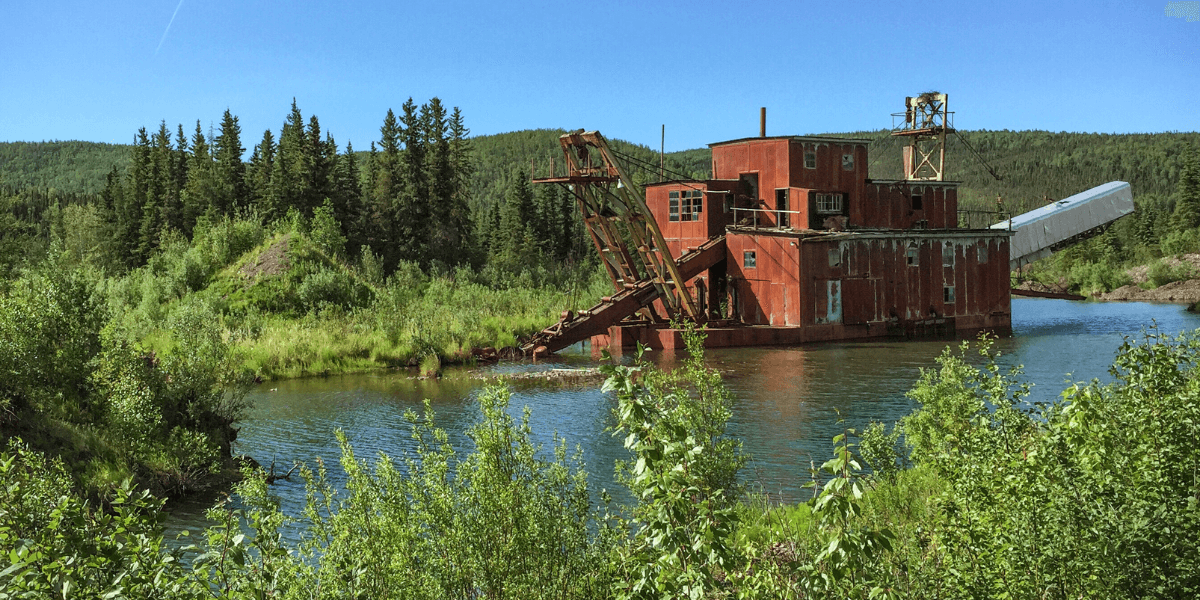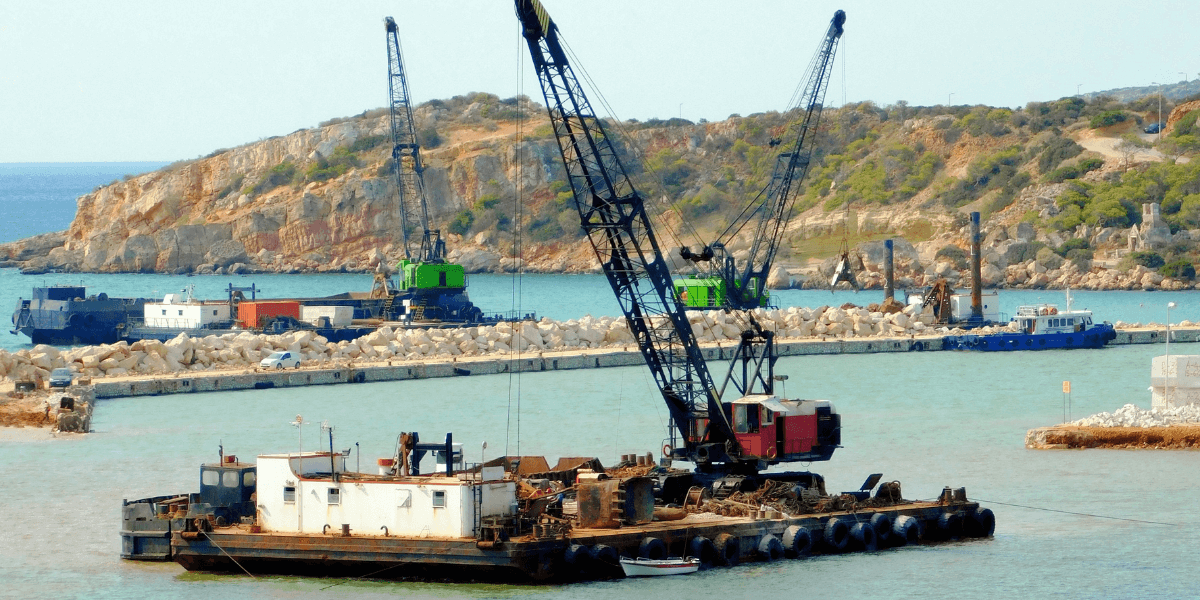The Necessity of Dredging
Dredging plays a vital role in maintaining the functionality and safety of our waterways, which are essential for global trade, transportation, and...

While many associate gold mining with the iconic gold rushes of the late 19th century, the truth is that the gold rush never truly ended in the United States. From the rivers of California to the remote wilderness of Alaska, modern-day prospectors and mining operations continue the pursuit of this timeless treasure. Gold remains a valuable commodity, not only for jewelry and investment but also for use in electronics, aerospace, and medical technology. This makes its discovery just as appealing today as it was over a century ago.
While the motivation to find gold remains the same, the techniques and technology have evolved dramatically since the days of the 49ers. Instead of pickaxes and pans, today’s miners often rely on more sophisticated and efficient methods, particularly when working in waterways and sediment-heavy environments. As a company that specializes in mine and mineral dredging, U.S. Aqua Services is uniquely positioned to support these modern gold recovery efforts. In this blog, we’ll explore the vital role dredging plays in contemporary gold mining and how it continues to shape the industry today.

The early gold dredges were colossal machines, towering several stories high and equipped with heavy machinery that required extensive manpower to operate. These massive structures were often positioned along rivers and streams, where they methodically stripped entire areas of their resources, whether gold or other materials. The technology of the time allowed for large-scale extraction, but it was also highly invasive, leaving behind significant environmental damage.
Today, these monumental dredges are largely considered relics of a bygone era. While they were once the cutting-edge technology of gold mining, their massive size and operational requirements made them less practical as methods and technologies evolved. Many of these historic dredges remain as remnants of the past, scattered across landscapes such as Alaska’s remote wilderness and the rugged hills of the Rocky Mountains.
Today, however, dredging technology has grown more precise and more compact. The result is that dredge operators often use smaller suction cutters or hydraulic dredges to displace mined materials and sort through them for gold.
In some cases, some miners make use of small backpack-sized dredges to quickly clear through material that larger machines would not be able to access. These portable dredges are lightweight and easy to maneuver, allowing individual miners or small-scale operations to explore creeks, streams, and other narrow or hard-to-reach locations where gold deposits might be overlooked by larger dredging equipment.
In addition, amphibious vehicles may be used for gold mining, and dredging. Not only does this prevent the risk of damaging land while searching, but it also allows you to search in areas where there might not normally be access such as rivers or lakes. By using amphibious vehicles, miners can avoid damaging the land while searching for gold, as these machines are designed to traverse challenging environments without leaving a significant footprint.
Gold dredging operations in the past involved placing a dredge directly on a suspected gold-rich area and strip-mining it extensively until all resources were depleted. Today’s gold mining practices have evolved to address these issues. Modern miners use more refined techniques to maximize efficiency and minimize environmental damage.
Targeted Dredging in River Bends: Gold often accumulates in river bends where the flow slows, allowing heavier gold particles to settle against the bank. Miners focus their efforts on these specific areas to extract gold more effectively.
Exploring River Mouths: The mouth of a river, where it flows into a larger body of water, is another prime location. The slower-moving water here facilitates the settling of gold, making it a valuable site for dredging.
Dredging at Waterfalls: The base of waterfalls is another key location for gold mining. The force of the falling water helps concentrate gold deposits at the base, making it an ideal spot for dredging.
Searching Natural Debris: Logs and large rocks in rivers act as natural gold pans by trapping gold particles as the water flows around them. Miners target these areas to separate gold from other minerals efficiently.
One thing that hasn’t changed in the gold dredging field is where it takes place. Just like in the 19th century, you’ll still find miners panning and dredging in states like Colorado, California, and Alaska, where gold-bearing rivers and streams continue to attract prospectors. These regions remain hotspots not only due to their historic significance but because they still produce measurable quantities of placer gold today.
Modern prospectors also explore parts of Montana, Oregon, and Idaho, where public lands and recreational gold mining are supported by state regulations. Many of these areas are managed by the Bureau of Land Management (BLM) or U.S. Forest Service, making it easier for individuals to research active claims and understand mining laws. With well-documented gold belts and accessible information, today’s gold seekers have plenty of opportunities to chase that modern-day gold rush.
When it comes to mining gold, the choice of dredging equipment is crucial for optimizing extraction and efficiency. Modern gold dredging relies on a variety of specialized tools designed to handle different types of terrain and sediment conditions. These will include the following
Gold dredges: Are the backbone of gold mining operations, using powerful systems to extract and process material from riverbeds. These also include suction and hydraulic models.
Gold Dredging Equipment: Such as sluice boxes and high-bankers work in tandem with these dredges to separate gold from other sediments effectively.
Gold Mining Dredges With trommels and centrifugal pumps they are employed to manage substantial volumes of material and enhance processing capabilities.
Amphibious vehicles and Floating dredges: Provide the necessary mobility and support to operate in swampy or deep water environments in areas with challenging terrain
Backpack Dredges: Offer portability for individual miners and small-scale operations.
Each type of dredging equipment plays a vital role in modern gold mining, ensuring that miners can extract gold efficiently while adapting to varying conditions.
Ready to take your gold panning to the next level? With the top-notch dredging equipment from U.S. Aqua Services, you can dive into industrial-scale gold mining like a pro.
We’ve got the gear you need to dig deep and uncover those hidden treasures beneath the earth. Whether you're ramping up your mining operation or just getting started, our dredging equipment rentals are here to support your quest for gold.
Contact us today to find out more about our dredging equipment rental services.
U.S. Aqua Services was created to support the dredging process in advancing commerce and responding to its many challenges. To accomplish this, our dredging company assembled an exceptional group of experienced individuals and a diverse inventory of dredge equipment.
We offer dredging equipment rental services so you can have access to the latest and greatest in dredging technology without having to pay to maintain it, transport, and store it, along with dewatering services.
With an emphasis on mobility, dependability, durability, diversity, efficiency, and safety, our dredging rental company can ensure that our different types of dredging systems are easy to move through any terrain and can work in the most rugged and remote environments. Our multi-function hydraulic systems are built with jetting and mechanical options that can efficiently move loose sediment or stiff layers of clay.
US Aqua services also and maintains a ready fleet of amphibious equipment capable of completing dredging projects in some of the harshest and most remote environments. U.S Aqua is also the dealer for Louisiana of the amphibious vehicle Fat Truck. No matter the size or scope of the job or the remoteness of your work location, you can rely on Fat Truck’s industrial off-road utility vehicles to get the job done right.
Dredging plays a vital role in maintaining the functionality and safety of our waterways, which are essential for global trade, transportation, and...

Subsurface dredging plays a pivotal role in maintaining waterway accessibility, supporting infrastructure projects, and restoring delicate ecosystems...
%20(1).png)
Dredging is a critical service in a wide range of industries — from environmental restoration to large-scale infrastructure projects. It involves the...